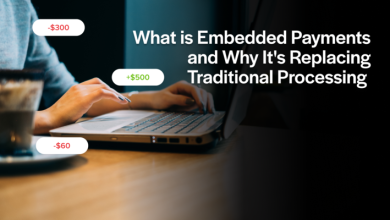
The start of a new year is time for new processes and new ways of working. For finance professionals, it’s also time to do the first audit of the year, starting with the current health of the company and how it matches against its forecasted revenue. This step is even more important than usual, as the business world prepares for the post-COVID-19 era.
Yet, one area remains a challenge for finance teams in businesses big and small: VAT reclaim. This is due to the complexity of reclaiming VAT using traditional means. Between a regulatory quagmire, outdated processes, and the additional complexity due to tax relief in some countries and the impact of Brexit in others, the potential for errors is high, and the risk of non-compliance provides a real headache for finance teams.
Using technology solutions, finance teams can easily simplify processes, improve compliance, and provide a much-needed revenue boost to their business.
The compliance conundrum
2020 was a challenging year for businesses, with many having to revaluate their revenue forecast due to unforeseen circumstances. This has resulted in a drop in turnover from traditional operations. To help the most vulnerable stay afloat, governments across Europe launched tax relief initiatives designed to entice buyers to purchase products and services at a cheaper price upfront. While this effectively kept economies going for the short term, it resulted in changing VAT rates associated with expenses and invoices for products and services throughout the year – leading even the most sophisticated finance team to spend extra hours sifting through invoices and expense claims to ensure they included the right VAT rate.
VAT reclaim is a complex topic at the best of times: it often relies on manual processes, from employees filing expenses to finance teams adjusting the rates to ensure compliance. These processes can easily lead to human error, resulting in claims being rejected at best, and increased regulatory scrutiny or even fines in the worst-case scenario. As a result, most businesses would rather outsource the exercise or forego it all together to avoid wasting precious time. Nothing could be further from the truth: with research highlighting that over 42% of employee expense transactions fail to meet requirements for VAT or GST reclaim due to incorrect information or missing data, and 54% of eligible VAT going unclaimed, many businesses are losing out on recouping much-needed funds through tax reclaim.
At a time when businesses across the whole of Europe are trying to stay profitable, claiming VAT can be a lifesaver. The priority should therefore be using tools that streamline processes and ensure compliance – even when the finance team faces changing rates.
The case for AI
To reclaim VAT, finance teams need to ensure they have filed all expenses and invoices in due course, while also guaranteeing that each submission complies with the regulations of the government the company is reclaiming VAT from. When relying on manual processes, businesses need to add an extra layer of complexity: encoding disparate expenses and invoices for processing by the right authorities. In this scenario, the potential for human error increases with each new invoice or expense claim that needs to be re-encoded to suit the regulatory requirements.
By using the digital expense and invoicing management systems, businesses reduce their reliance on manual processes. Sophisticated platforms powered by AI enable businesses to combine efficient data capture and enrichment from multiple sources into a unified digital workflow. This results in a much simpler process for the employee, who only needs to submit their expense claim or invoice.
The platform will then collate all the relevant information, including VAT associated with the products submitted in the claim, and provide the finance team with the full picture in a simple, centralised dashboard. This simplifies processing and helps reduce the time the finance team spends assessing each claim. Simply put, these platforms reduce the risk of non-compliance, and provide additional governance and visibility into the full value of reclaimable tax for the business. The extra savings can easily be processed and reallocated to the areas of the business that matters most – whatever the size of the company.
Setting the scene for post-Brexit VAT reclaims
As we’ve seen, VAT is complex at the best of times, and 2020’s fast-changing regulations have given European businesses a glimpse of what they can expect post-Brexit. Currently, both British and European businesses need to submit their digital claims via an electronic portal that centralises all claims. While the system is by no means easy, organisations that operate across the two blocs will face increased complexity after April 2021 and should prepare accordingly.
From the 1st April 2021, British companies claiming VAT in EU countries will no longer have access to the EU electronic portal. Instead, they will need to get familiar with the standard procedures for each of the countries they want to reclaim the VAT from, which vary from one to the next. On the other hand, EU countries that want to claim VAT in the UK as of 1st January 2021 will need to submit their claims using a digital form available on the UK government’s website. The new system is likely to increase complexity and by extension, the risks of non-compliance.
For finance teams in the EU and the UK, it’s now more important than ever to simplify processes and minimise the risks of non-compliance at every step of the way. Digitalising expense and invoice management is the first step towards a simpler, more effective VAT reclaim system. It also makes for happier, more productive employees who are safe in the knowledge that the expenses and invoices submitted via their standard system comply with the VAT regulations across the world’s biggest economic bloc.




